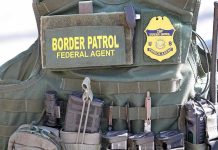
Trump sends elite Border Patrol units to Los Angeles as anti-ICE riots spiral beyond local control, forcing decisive federal action despite Governor Newsom’s objections.
Key Takeaways
- Specialized Border Patrol units including BORTAC, BORSTAR, and MRT are being deployed to Los Angeles to quell violent anti-ICE protests alongside 2,000 National Guard troops.
- Unlike National Guard members, these federal agents possess full arrest authority for federal crimes, significantly enhancing law enforcement capabilities.
- Recent protests resulted in 118 ICE arrests of criminal aliens while demonstrators attacked federal buildings, damaged law enforcement vehicles, and assaulted ICE agents.
- President Trump criticized Governor Newsom and Mayor Bass for failing to maintain order, prompting the federal intervention despite state leadership opposition.
- DHS Secretary Kristi Noem and Border Patrol Chief Michael Banks have issued stern warnings that attacks on law enforcement will result in federal prosecution.
Elite Border Patrol Units Deployed to Combat Escalating Violence
The Trump administration has ordered specialized Border Patrol tactical units to Los Angeles to restore order amid increasingly violent anti-ICE demonstrations. This deployment includes members from the Border Patrol Tactical Team (BORTAC), Border Patrol Search, Trauma, and Rescue unit (BORSTAR), and Mobile Response Teams (MRT), all highly trained in handling riot situations and crowd control. These federal agents will supplement the 2,000 National Guard troops already committed to the area, bringing significant law enforcement experience and capabilities to address what officials describe as “lawlessness” in Los Angeles.
A critical difference between these Border Patrol agents and National Guard personnel is their full arrest authority for federal crimes. This gives them direct ability to engage in law enforcement actions, making them particularly valuable assets in the current crisis. The exact number of agents being deployed remains classified for operational security reasons, though sources indicate the contingent is substantial and may increase depending on how the situation develops. These elite units have extensive experience with riot response, having previously deployed during the 1992 Los Angeles riots.
Federal Intervention Despite State Opposition
President Trump made the decision to deploy federal forces after local and state authorities failed to contain the violence that has erupted during anti-ICE protests. Recent demonstrations have seen over 1,000 rioters surrounding federal buildings, attacking Border Patrol vehicles with rocks and concrete, and vandalizing property with anti-ICE graffiti. The situation reached a crisis point near a Home Depot in Paramount, California, where tear gas was deployed during an ICE operation that subsequently triggered violent protests and multiple arrests.
“If Governor Gavin Newscum, of California, and Mayor Karen Bass, of Los Angeles, can’t do their jobs, which everyone knows they can’t, then the Federal Government will step in and solve the problem, RIOTS & LOOTERS, the way it should be solved!,” said President Donald Trump.
Governor Gavin Newsom has publicly opposed the federal deployment, characterizing it as inflammatory and unnecessary. This resistance has done little to deter the administration, which views the situation as requiring immediate federal action. Vice President JD Vance has described the border crisis as an “invasion,” citing incidents of foreign nationals assaulting American law enforcement officers as evidence of the severity of the situation requiring decisive federal response.
ICE Operations Continue Despite Violent Opposition
Recent ICE operations in Los Angeles have resulted in 118 arrests, targeting individuals with significant criminal histories including gang members. These enforcement actions are part of the administration’s broader strategy to restore immigration enforcement, particularly in sanctuary jurisdictions that have historically restricted cooperation with federal immigration authorities. Federal officials have made it clear that the protests will not impede their enforcement duties, with Border Patrol and ICE continuing operations despite the violent opposition.
“ANY attack on our agents or officers will not be tolerated. You will be arrested and federally prosecuted,” said U.S. Border Patrol Chief Michael W. Banks.
The FBI has joined the effort, seeking information on individuals who attacked law enforcement vehicles during the protests. DHS Secretary Kristi Noem has issued an unambiguous warning to protestors that violence against law enforcement will be met with the full force of federal prosecution. The Mobile Response Teams being deployed are particularly suited for this mission, having previously supported the U.S. Secret Service and trained foreign law enforcement in crowd control tactics similar to those now needed in Los Angeles.
Reporter’s Vehicle Hit in Paramount Riots: @MattSeedorff Covers Chaos as Protesters Clash with Border Patrol!
Fox News LA reporter Matthew Seedorff found himself in the thick of escalating violence in Paramount, California, where his news vehicle was struck during intense riots… pic.twitter.com/j8W4glgSUY
— Off Topic Show (@OffTopicShow2) June 7, 2025
Historical Precedent and Future Implications
This deployment of specialized Border Patrol units follows historical precedent, as similar forces were utilized during the 1992 Los Angeles riots. The Border Patrol has sectors across the nation available to contribute personnel, including San Diego, Tucson, El Paso, Laredo, Del Rio, Rio Grande Valley, Detroit, Spokane, Houlton, Swanton, Blaine, and Buffalo. These resources provide the federal government with significant flexibility to adjust force levels as needed in response to changing conditions on the ground.
“A message to the LA rioters: you will not stop us or slow us down, ICE will continue to enforce the law. And if you lay a hand on a law enforcement officer, you will be prosecuted to the fullest extent of the law,” said DHS Secretary Kristi Noem.
The Trump administration’s decisive action in Los Angeles signals its broader commitment to enforcing immigration laws regardless of local political resistance. The deployment of these specialized units, with their unique training and full arrest authority, represents a significant escalation in the federal response to what has become an increasingly dangerous situation for law enforcement personnel. As the operation continues, federal officials remain committed to maintaining order while continuing immigration enforcement operations.













